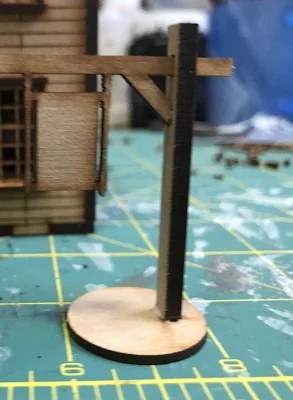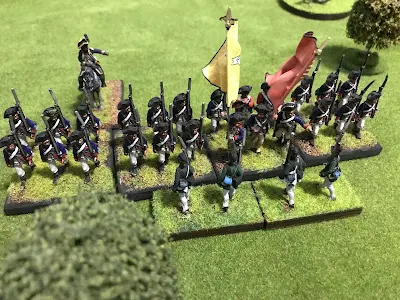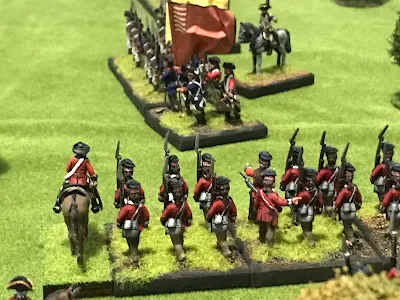One of the most interesting and colorful units of the American Revolution was Lauzun’s Legion. A mixed force of Hussars (some armed with Lances), infantry and artillery, they could provide a colorful and unusual element for your games. They arrived in America in July 1780 as part ofthe French Army under Rocheambeau. They marched south a year later participating in the Yorktown campaign. During the siege they fought a battle with Tarleton and his Legion. Its a unit I have always wanted to add to my collection and its about time I did.
Lauzun's Legion was one (the 2nd) of eight foreign legionary corps to be formed by the Ministry of Marine for service overseas. The project was abandoned after only three legions had been formed. The 1st was sent to the Caribbean; the 2nd to Africa; and the 3rd to India.
Each legion was supposed to be made up of a company each of hussars, gunners and workmen as well as a small infantry battalion of one Grenadier company, one Chasseur company and two Fusilier companies. There was also a "Compagnie Generale" (a sort of HQ formation), of one company of hussars. This unit was thought to be the one armed with lances.

The 2eme Legion became "Lauzun's Legion" around 1779/80. The new Legion was composed of the 2nd Legion Volontaires Étrangers de la Marine and new recruits, was named Volontaires Étrangers de Lauzun (Foreign Volunteers of Lauzun). This new Legion was made up of 800 infantry and 400 cavalry divided into 5 companies of infantry. These included 2 companies of Fusiliers, one Grenadier, one Artillery and one Chasseur company. Each squadrons of hussars were to be made up of two companies; one of French hussars and the other of Polish lancers. The uniform of the Legion would be the same as the previous 2nd Legion except that all hussars were supposed to be dressed as the Compagnie Generale company. As with all things in Lauzon Legion its doubtful that happened and a mix of the two Hussar uniforms probably occurred.
Hussars:
The first, and most famous part of the Legion were its two hussar squadrons; the 1st Squadron of Hussars and the 2nd Squadron of Hussars. Both were supposed to have 150 men each. Due to transport space issues the 1st Squadron arrived with 159 men while the 2nd Squadron arrived with 136 men. In addition at Yorktown Guessed from the 1st Legion arrived from the West Indies and possibly were added. Because of the nature of supplies and the amalgamation of legions and recruits there appears to be two styles of Buscar uniforms. The company's with Lances appear to have red trousers while the "French" style guessed wore yellow.
Infantry:
The infantry of the Legion was supposed to contain a grenadier company of 100 men, a chasseur company of 170 men, and two line infantry (fusilier) companies of 170 men each. When Rocheambeau’s force left France there was a shortage of transport ships so the Fusilier companies were left behind. The Grenadier Company sailed with 116 men and wore a bearskin hat without a front plate. The Chasseur Company sailed with 99 men and wore a black cocked hat with white tape (and not a helmet).
Artillery :
The original establishment of the artillery company was supposed to be 171 men, so about half were left behind, which is probably why the artillery company got such a large number of the recruits originally from the Barrois Regiment. The guns consisted of four 4-pdr smoothbore cannons. The artillerists work a dark blue coat like the regular French Artillery, but with lemon yellow facings.
Wargames Organization:
I plan on addition the Legion to my table top armies. They will comprise two squadrons of His wars of 12 figures each and a light infantry unit if 20 figures plus a artillery company.
The Hussars will have one company dressed in the French style with yellow trim and trousers. The second squadron will be trimmed in red and be armed with lances. Each will be two figures per stand and a HQ stand to command the legion. The infantry will chassaurs mounted 2per stand. A light four pounder gun and crew rounds it out. All figures are from Perry miniatures. With the figures ordered I will start to paint right away and I hope to have this new addition to my armies on the table and fighting soon. Stay tuned!






























































